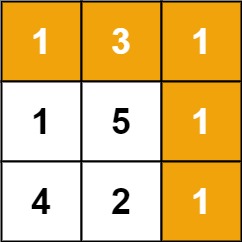Binary trees serve as a fundamental data structure in computer science, offering versatile solutions to various problems. One such intriguing problem is determining whether a given binary tree is an Even-Odd Tree. In this blog post, we’ll embark on a journey to understand the concept of an Even-Odd Tree and delve into an algorithmic solution to determine its nature using a breadth-first search (BFS) approach.
Understanding the Problem:
An Even-Odd Tree is a binary tree where:
- The root node has an odd value.
- The values of nodes at even levels (1-indexed) are strictly decreasing from left to right.
- The values of nodes at odd levels are strictly increasing from left to right.
Our task is to implement an algorithm to determine whether a given binary tree meets the criteria of an Even-Odd Tree.
Approach and Code Explanation:
To solve this problem, we’ll use a breadth-first search (BFS) approach to traverse the binary tree level by level. During traversal, we’ll check if the current level meets the criteria of an Even-Odd Tree.
Here’s the breakdown of the Java solution:
class Solution {
public boolean isEvenOddTree(TreeNode root) {
LinkedList<TreeNode> queue = new LinkedList<TreeNode>();
if (root == null || root.val %2 == 0) {
return false;
}
queue.add(root);
int level = 1;
while(queue.size() > 0) {
int n = queue.size();
int prev = -1;
for(int i=0;i<n;i++) {
TreeNode temp = queue.poll();
if (level % 2 != 0) {
// Odd level
if (temp.left != null && temp.left.val % 2 != 0 ) {
return false;
}
if (temp.right != null && temp.right.val % 2 != 0 ) {
return false;
}
if (temp.left != null) {
if (prev != -1 && prev <= temp.left.val){
return false;
}
prev = temp.left.val;
}
if (temp.right != null) {
if (prev != -1 && prev <= temp.right.val){
return false;
}
prev = temp.right.val;
}
} else {
// Even level
if (temp.left != null && temp.left.val % 2 == 0 ) {
return false;
}
if (temp.right != null && temp.right.val % 2 == 0 ) {
return false;
}
if (temp.left != null) {
if (prev != -1 && prev >= temp.left.val){
return false;
}
prev = temp.left.val;
}
if (temp.right != null) {
if (prev != -1 && prev >= temp.right.val){
return false;
}
prev = temp.right.val;
}
}
if (temp.left != null){
queue.add(temp.left);
}
if (temp.right != null) {
queue.add(temp.right);
}
}
level++;
}
return true;
}
}https://leetcode.com/problems/even-odd-tree/description/
- We define a class
Solutionthat contains the solution logic. - The
isEvenOddTreemethod takes the root node of the binary tree as input and returns a boolean indicating whether the tree is an Even-Odd Tree. - We initialize a
LinkedListnamedqueueto perform breadth-first traversal of the binary tree. We start by adding the root node to the queue. - We check if the root node is null or has an even value. If so, we immediately return false.
- We maintain a variable
levelto keep track of the current level during traversal. - Within the
whileloop, we process each level of the binary tree. At each level:- We retrieve the current size of the queue (
n) to process all nodes at the current level. - We initialize a variable
prevto keep track of the previous node’s value within the current level. - We iterate through all nodes at the current level, removing them from the queue one by one (
temp = queue.poll()). - Depending on whether the level is odd or even, we perform specific checks:
- For odd levels: We ensure that the values are odd and strictly increasing from left to right.
- For even levels: We ensure that the values are even and strictly decreasing from left to right.
- We enqueue the left and right children of the current node if they exist.
- We retrieve the current size of the queue (
- Finally, we return true if the binary tree satisfies the conditions of an Even-Odd Tree.
